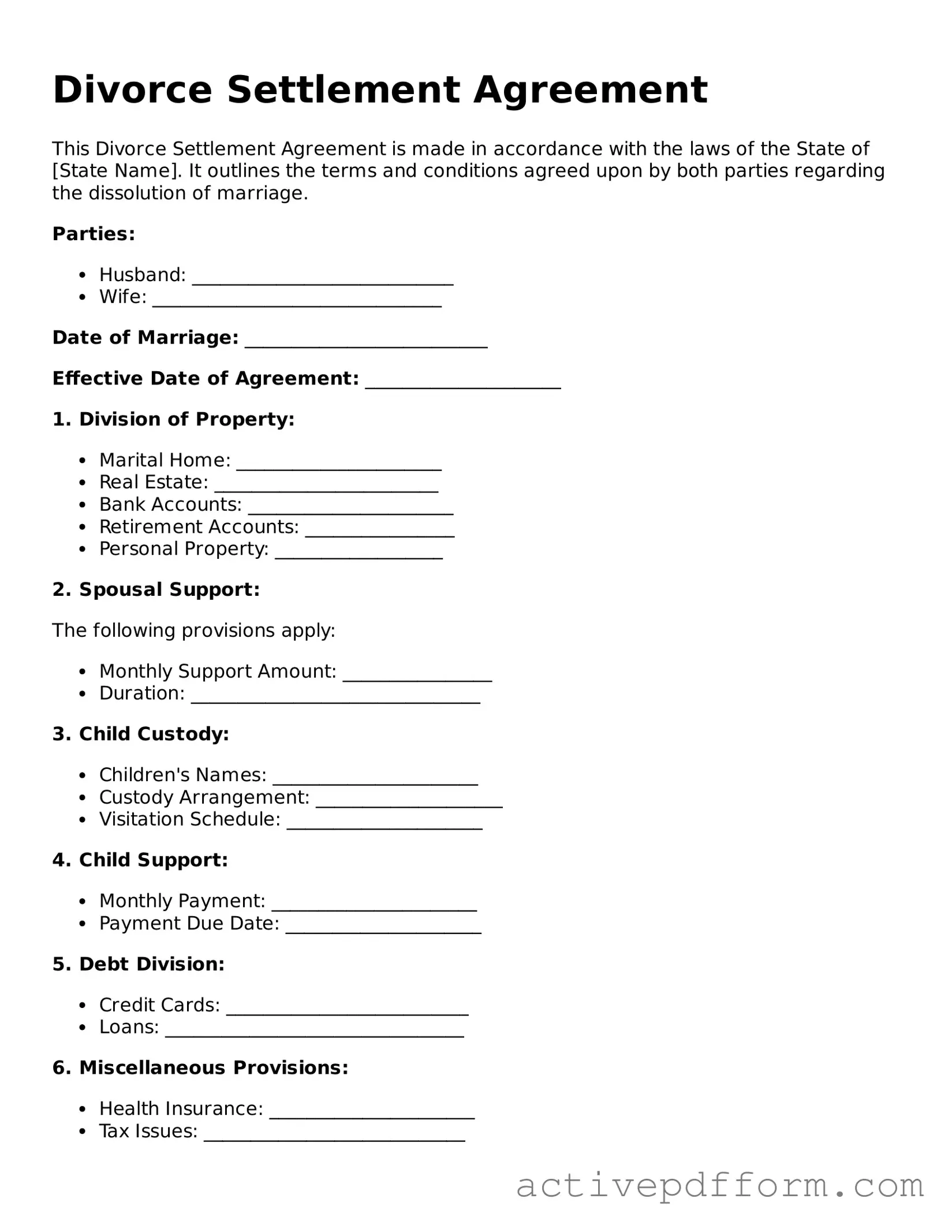What is a Divorce Settlement Agreement?
A Divorce Settlement Agreement is a legal document that outlines the terms of a divorce. It covers important issues like property division, child custody, and spousal support. Both parties must agree to the terms for it to be valid.
Why do I need a Divorce Settlement Agreement?
This agreement helps to clarify the rights and responsibilities of each spouse after the divorce. It can prevent future disputes and provides a clear roadmap for both parties moving forward.
What should be included in a Divorce Settlement Agreement?
Your agreement should include details about asset division, debt responsibility, child custody arrangements, visitation schedules, and any spousal or child support. It’s essential to cover all relevant topics to avoid misunderstandings later.
How do I create a Divorce Settlement Agreement?
You can create this agreement by discussing terms with your spouse and drafting the document. Many people choose to use templates or seek legal assistance to ensure all necessary elements are included and properly formatted.
Can I modify a Divorce Settlement Agreement after it’s signed?
Do I need a lawyer to draft a Divorce Settlement Agreement?
While it’s not legally required, having a lawyer can be beneficial. A legal expert can help you understand your rights, ensure the agreement is fair, and make sure it complies with state laws.
How is a Divorce Settlement Agreement enforced?
If one party does not comply with the agreement, the other can take legal action. The court can enforce the terms of the agreement, so it’s crucial to ensure that all terms are clear and fair.
What happens if we can’t agree on the terms?
If you and your spouse cannot reach an agreement, you may need to go to mediation or court. A mediator can help facilitate discussions, while a judge will make decisions if mediation fails.
Is a Divorce Settlement Agreement the same as a divorce decree?
No, they are not the same. The Divorce Settlement Agreement is the document outlining the terms, while the divorce decree is the official court order that finalizes the divorce and makes the agreement enforceable.
How long does it take to finalize a Divorce Settlement Agreement?
